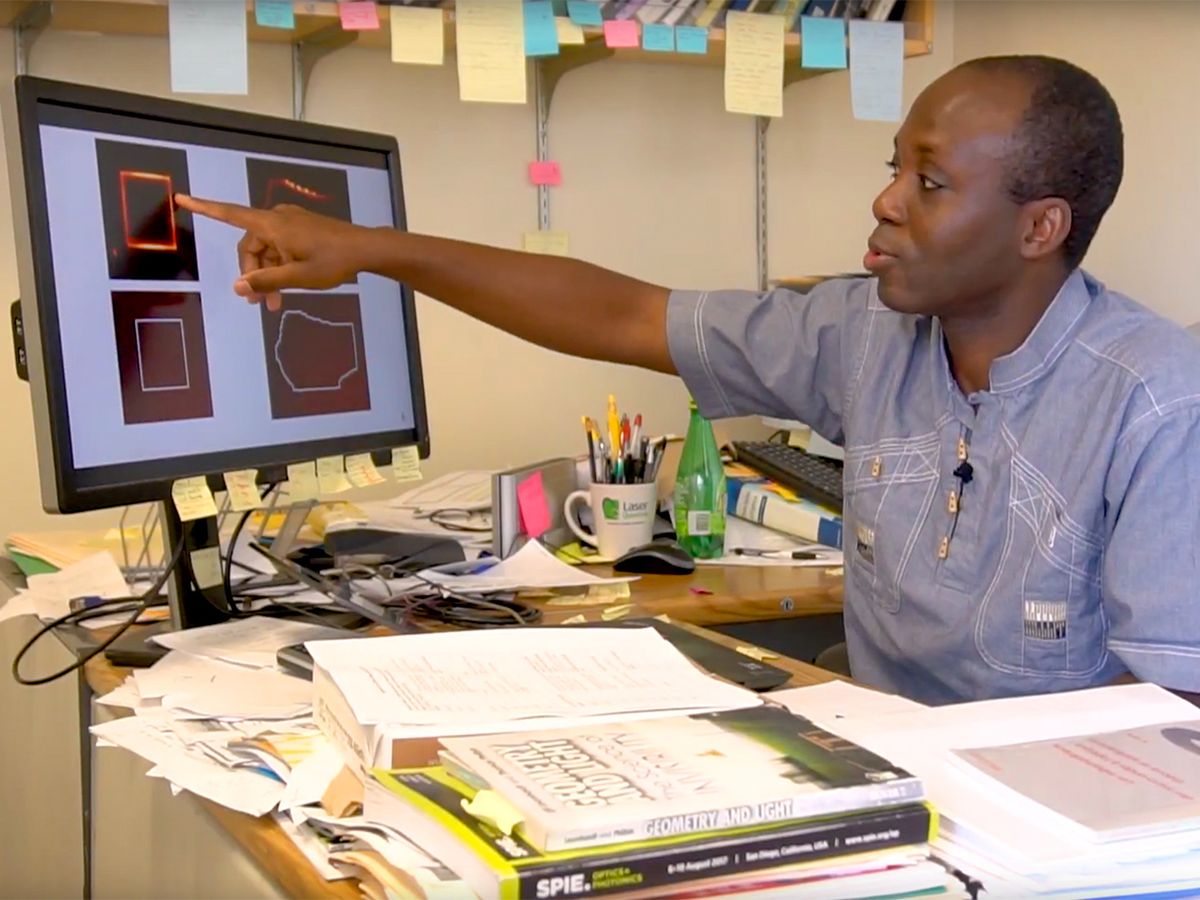A new type of laser cavity that builds off a Nobel-winning development in physics can take on any shape and switch the flow of light with a magnetic field.
“Being able to do this kind of thing with light is a very exciting prospect,” says Boubacar Kante, a physicist at the University of California, San Diego. Kante and his colleagues describe their so-called topological cavities in the current issue of Science.
Normally, a laser cavity, where light amplification takes place, is shaped like a ring. If it had sharp corners, some of the light would be lost and the laser wouldn’t work as well. One result of the ring shape is that if engineers want to place many lasers on a chip—say for optical communications or computing—there’s a lot of wasted space between the rings.
Kante’s group overcomes that constraint on shape by creating a topological cavity. They built quantum wells—the part that does the lasing—out of indium gallium arsenide phosphide. They placed those inside photonic crystals made from yttrium iron garnet. A photonic crystal has a crystalline structure on the same size scale as the wavelength of light passing through it, and the structure acts as a mirror, steering light along a desired path.
In this case, the researchers made two types of photonic crystals that had different topologies. One had a unit cell—the basic crystalline shape that gets repeated over and over to build up the crystal—that was star-shaped, in a square lattice. The other was a triangular lattice with cylindrical air holes. Kante compares the different crystals to a bagel and a pretzel; though they’re both essentially bread with a hole, the different number of holes means they’re fundamentally different shapes.
In Kante’s system, one photonic crystal sits inside a different photonic crystal, and the interface where the two meet become the laser cavity. “That interface can have any shape that you want,” he says.
With the crystals in place, Kante then applies a magnetic field, which turns the system into the optical equivalent of a topological insulator, a material that is insulating in its bulk but conductive along its surface. The 2016 Nobel Prize in physics went to the scientist whose work led to the creation of topological insulators, but previous devices focused on electrical current. In a photonic crystal topological insulator, the flow of light is restricted to the place where the surfaces of the crystal meet. Flipping the sign of the magnetic field changes the direction in which light is emitted.
The immediate practical result will be in allowing engineers to pack lasers more densely onto a chip, leading to higher speed optical communications. But having another way to control light may ultimately lead to new types of photonic devices and pave the way for all-optical computing that is faster and less power-hungry than current computers.
Neil Savage is a freelance science and technology writer based in Lowell, Mass., and a frequent contributor to IEEE Spectrum. His topics of interest include photonics, physics, computing, materials science, and semiconductors. His most recent article, “Tiny Satellites Could Distribute Quantum Keys,” describes an experiment in which cryptographic keys were distributed from satellites released from the International Space Station. He serves on the steering committee of New England Science Writers.



